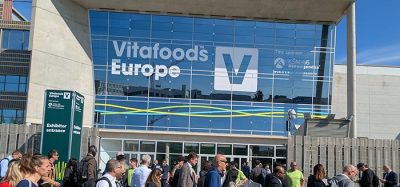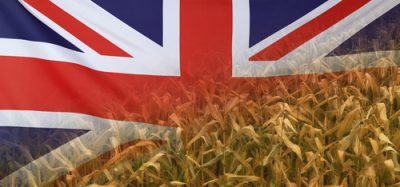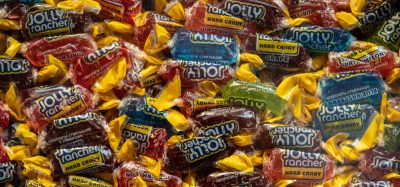The holy grail of a single food safety specification
- Like
- Digg
- Del
- Tumblr
- VKontakte
- Buffer
- Love This
- Odnoklassniki
- Meneame
- Blogger
- Amazon
- Yahoo Mail
- Gmail
- AOL
- Newsvine
- HackerNews
- Evernote
- MySpace
- Mail.ru
- Viadeo
- Line
- Comments
- Yummly
- SMS
- Viber
- Telegram
- Subscribe
- Skype
- Facebook Messenger
- Kakao
- LiveJournal
- Yammer
- Edgar
- Fintel
- Mix
- Instapaper
- Copy Link
Posted: 3 December 2008 | Kath Veal, Business Manager Regulatory Services, Leatherhead Food International | No comments yet
Global regulatory food advice is one of the core areas of expertise at consultancy and research firm Leatherhead Food International. The regulatory advisors work within three teams specialising in United Kingdom, European (EU) or International regimes. Working with not only generic EU controls, but the detail of individual member states regularly illustrates the lack of harmonisation within Europe and our global coverage gives us a strong awareness of the challenge of international trade.
Global regulatory food advice is one of the core areas of expertise at consultancy and research firm Leatherhead Food International. The regulatory advisors work within three teams specialising in United Kingdom, European (EU) or International regimes. Working with not only generic EU controls, but the detail of individual member states regularly illustrates the lack of harmonisation within Europe and our global coverage gives us a strong awareness of the challenge of international trade.
Global regulatory food advice is one of the core areas of expertise at consultancy and research firm Leatherhead Food International. The regulatory advisors work within three teams specialising in United Kingdom, European (EU) or International regimes. Working with not only generic EU controls, but the detail of individual member states regularly illustrates the lack of harmonisation within Europe and our global coverage gives us a strong awareness of the challenge of international trade.
Regulatory topics covered within the teams are many and varied, as illustrated in Figure 1 (see page 67). Whilst this indicates many topics, it is not an exhaustive list of regulatory controls. Much advice is centred on compositional acceptability, claims and general labelling issues but the largest growth recently in bespoke project work has been focused around pesticide residues, contaminants and food safety.
Food companies have a direct responsibility for the safety of the food they produce, manufacture, transport, store or sell. Food safety systems within companies will be audited both by clients and by enforcement officials. Product testing against set food safety criteria and regarding general safety falls within the responsibility of industry and public authorities. Control levels for certain hazards will be specifically defined in standards, guidelines, supply contracts and the law. With increasing globalisation, both with ingredient sourcing and final product marketing, divergent regulatory limits for food safety parameters are a nightmare for quality departments.
Food safety is a key consideration in the development of legal controls, to the extent that even if a risk has not been specifically addressed, legal regimes will always provide a ‘catch all’ provision that requires food to be ‘safe’. Aside from criminal sanctions against food producers, civil law will always provide an opportunity for a claim against harm to a particular consumer or group of consumers caused by a food product.
An example of a general food safety requirement can be found in law at an EU level which simply requires that food shall not be placed on the market if it is unsafe1. Generic requirements are supplemented by specific limits in circumstances where a risk has been identified and quantified.
Legal controls generally regarded as food safety issues include the following:
- Microbiological criteria
- Pesticide residue limits
- Veterinary drug residue limits
- Process contaminant restrictions
- Environmental pollutant controls
- Toxin limits
Interestingly, within Europe the Directorate General for Health and Consumers has responsibility for EU laws on the safety of food, also group animal disease, packaging materials, irradiation, flavourings and additives under food safety2. Food fraud may also give rise to food safety issues, as tragically evidenced by the issues of Melamine contamination in milk in China, but this often has to be dealt with under emergency measures.
To locate the regulatory limits applicable for your foodstuffs with regard to food safety parameters can require extensive searching, especially if you wish to set a company-wide specification which will achieve product compliance in all the countries in which you trade. Limits are set in both product specific controls, e.g. additive purity criteria and compositional standards for foods, as well as generic provisions on, for example, contaminants.
Chemical compounds linked to toxicological food safety concerns are often grouped under the heading of ‘contaminants’. From a legal perspective, pesticide use (or plant protection products as these substances are now known in Europe) and veterinary drug residues are generally not within the legal definition of a contaminant, as they are intentionally added.
Within Europe, a contaminant is defined for regulatory purposes3 as:
“…any substance not intentionally added to food which is present in such food as a result of the production (including operations carried out in crop husbandry, animal husbandry and veterinary medicine), manufacture, processing, preparation, treatment, packing, packaging, transport or holding of such food, or as a result of environmental contamination. Extraneous matter, such as, for example, insect fragments, animal hair, etc, is not covered by this definition.”
This Regulation also provides guidance for the setting of specific limits regarding contaminant levels, as set out below:
Food containing a contaminant in an amount which is unacceptable from the public health viewpoint and in particular at a toxicological level shall not be placed on the market. Furthermore, contaminant levels shall be kept as low as can reasonably be achieved by following good practices at all the stages referred to in Article 1 (the definition of a contaminant reproduced above).
The European approach to food safety follows the precautionary principle4, with regard to risk management which is reflected in stringent legal limits with large safety margins. This principle can often explain the difference between European food safety limits and those set in other regimes and it has been criticised as a non-tariff trade barrier.
Commission Regulation (EC) No. 1881/2006 of 19 December 2006 (as amended) sets maximum levels for certain contaminants in foodstuffs5. The Regulation contains provisions on maximum limits for a range of substances in foodstuffs, as detailed in Table 1 on page 67.
Maximum limits apply to the edible part of the foodstuff. For products which are processed, e.g. dried, diluted or manufactured from more than one ingredient, the maximum levels applicable must be calculated by the food business.
European food law aims at harmonising existing national requirements in order to ensure the free movement of food and feed in the EU. It should be noted however that whilst limits for the contaminant/commodity combinations set out in Table 1 are harmonised, national limits for additional contaminants, e.g. for arsenic, are permitted by this Regulation. The allowance of national levels complicates a theoretically harmonised market and occasionally requires a company to review controls across the regulations in all 27 member states.
At an international level, Codex also use the same definition of a contaminant; Codex documents in this area include a general standard on contaminants6, several product specific standards and a range of codes of practice for the reduction of contaminant levels, all of which should be consulted to check applicable working practices and maximum levels. Codex standards are reviewed and updated annually with specific committees dedicated to specialised topics, one such group being the Codex Committee on Contaminants in foods. Conclusions on updates to controls are published in a report which is forwarded to the Codex Alimentarius Commission for ratification. Amendments this year included new levels for 3-MCPD in certain liquid condiments, ochratoxin A in raw wheat, barley and rye, and aflatoxins in almonds, hazelnuts and pistachios7.
The Codex levels and definitions in some instances vary from those at an EU level and many countries follow Codex decisions for food safety issues, though increasingly the EU is the benchmark for food safety. US controls are a default for acceptability in some countries and again differ from the EU and Codex both in levels set and conceptually. The US regime sets action levels which may not be exceeded however does not preclude action against a company with detectable contaminants in their product if efforts have not been made to reduce levels8.
The EU has a stated commitment to its international obligations and has stated that food safety controls will be developed and adapted, taking international standards into consideration, except where this might undermine the high level of consumer protection pursued by the EU. At a practical level, convergence of legal food safety standards is still minimal. This situation has been recognised by another arm of the European Commission, the Directorate General for Enterprise.
A High Level Group on the Competitiveness of the Agro-Food industry has been established9 with a mandate to:
- Address those issues that determine and will determine the future competitiveness of the Community agro-food industry
- Identify the factors that influence the competitive position and sustainability of the Community agro-food industry, including future challenges and trends likely to impact on competitiveness
- Formulate a set of sector-specific recommendations addressed to policy makers at the Community level
Specific working groups have been established to research specific areas, one of which being regulatory restrictions, with results feeding back into the high level group. Conclusions are anticipated in spring next year and it is to be hoped that efforts will be made to improve the harmonisation of legislation both within Europe and beyond.
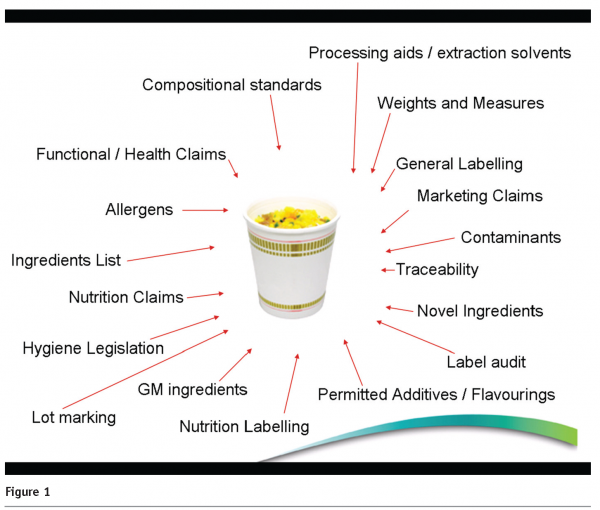

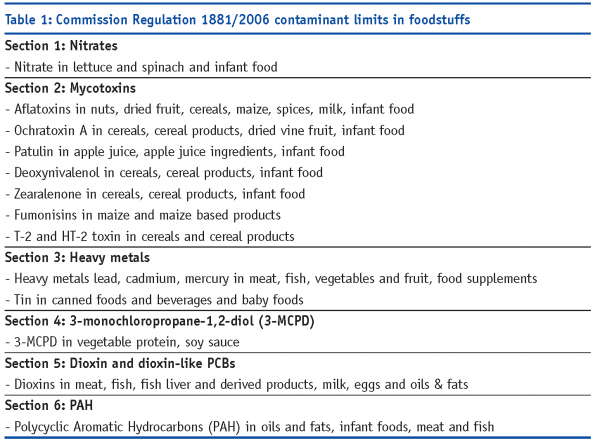

References
- Regulation (EC) No 178/2002 (as amended)of the European Parliament and of the Council of 28 January 2002 laying down the general principles and requirements of food law, establishing the European Food Safety Authority and laying down procedures in matters of food safety
- http://ec.europa.eu/food/food/index_en.htm
- Council Regulation 315/93/EEC (as amended) of 8 February 1993 laying down Community procedures for contaminants in food
- Communication from the Commission on the precautionary principle (COM/2000/0001 final)
- Commission Regulation (EC) No. (as amended) 1881/2006 of 19 December 2006 of 19 December 2006 setting maximum levels for certain contaminants in foodstuffs
- Codex General Standard for Contaminants and toxins in foods (CODEX STAN 193-1995, Rev.3-2007)
- Alinorm 08/31/41
- Contaminants in foodstuffs – volume 1, Leatherhead Food International
- 2008/359/EC: Commission Decision of 28 April 2008 setting up the High Level Group on the Competitiveness of the Agro-Food Industry





